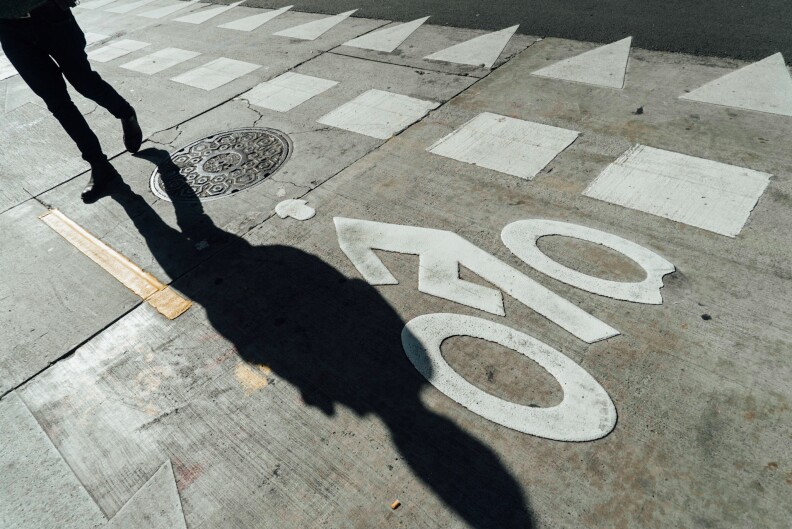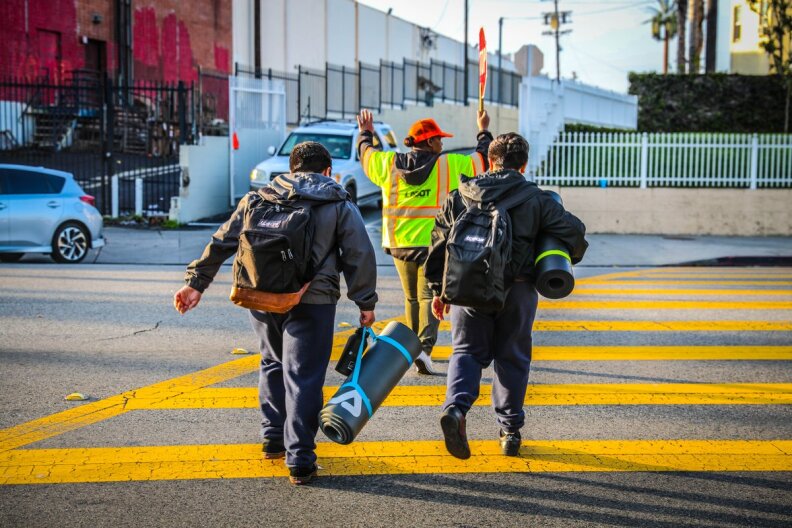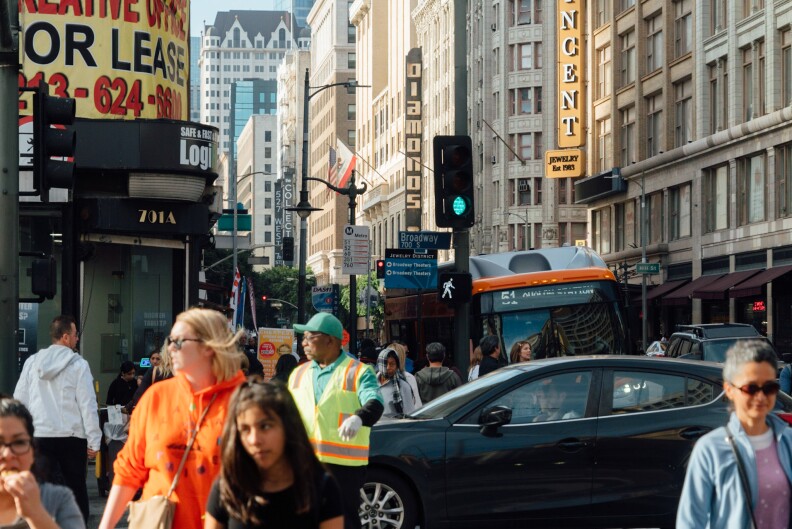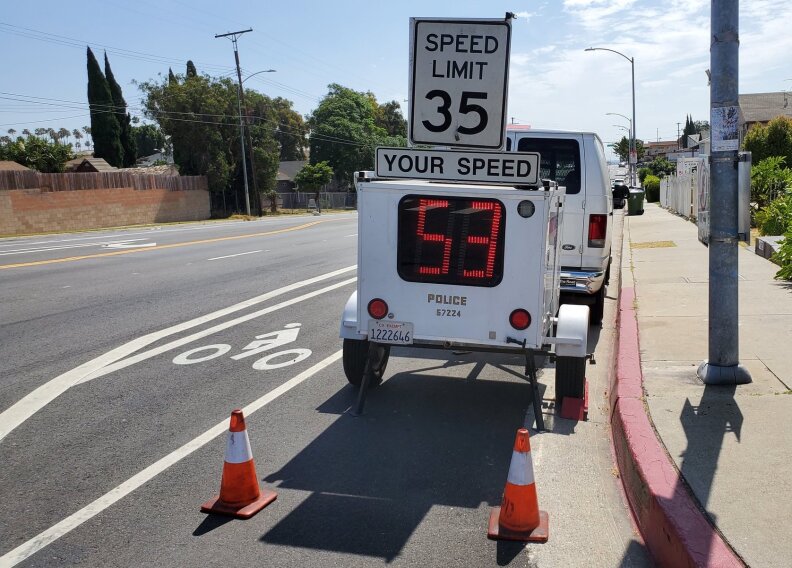In 2019, 134 people were killed by drivers while walking in Los Angeles. That's about one death every two-and-a-half days. In fact, pedestrian deaths increased from 87 in 2014 — or nearly 55% over 5 years. Hundreds more pedestrians are injured by drivers each year.
What makes that statistic even more troubling is that deaths climbed after city officials implemented Vision Zero, a program with the very public goal of ending such deaths by 2025. The safety initiative is managed by the city's Department of Transportation.
I'd been watching the progress (or lack of progress) with Vision Zero for a while. Then in October 2019, a pre-schooler named Alessa Fajardo was killed by a driver in Koreatown while crossing with the light, in a crosswalk, holding her mother's hand. She was just steps from her school.

I wanted to understand what factors led up to her death. You can read my full story here.
Below are five key takeaways from my reporting.
Safety Improvements Take Too Long
In the roughly 14 months since Alessa died, little has been done to improve safety at the intersection where she was killed. So far, the city of L.A. has only re-striped the crosswalks.
This is true despite the existence of comprehensive measures designed to get people to drive slower and safer. According to Damian Kevitt, executive director of the nonprofit Streets are for Everyone (SAFE), improving safety after someone is killed is an all-too-common trend in Los Angeles.
"I've seen that happen so many times," Kevitt told me. "And even though an intersection is a known problem, it does take a tragedy before a council office will step up and advocate and put in the extra effort to demand that the changes get done."

Kevitt's organization works with victims of traffic violence and their families to advocate for safer streets for all road users. And he's no stranger to the perils of road travel in L.A., losing part of his leg after he was struck by a hit-and-run driver while riding his bike near Griffith Park.
Kevitt said L.A. "needs to get faster and more efficient on addressing these corridors."
LADOT General Manager Seleta Reynolds agrees that projects take too long. She pointed to a reliance on outside grants and a lack of city funding, but also said she's limited in what her department can do for reasons "that are somewhat political and somewhat about outreach."
"I don't have a mandate to go out in a top-down way and... redesign the streets in a way that would make them safer," Reynolds said. "Every single [traffic death] feels urgent to me but I don't have the dollars to address all of them simultaneously."
Leaders State Priorities, But Resources Don't Match

There's a common phrase you'll hear from L.A. leaders and their press releases: "Safety is our top priority." But in reality, safety is just one of the priorities "competing on the same battlefield," Reynolds told me.
There's also plenty of bureaucratic murkiness to go around.
For example, the intersection where Alessa died is within a project zone that's slated for safety improvements through LADOT's Safe Routes to School (SRTS) program. City officials say the program is "a fundamental supporting strategy for Vision Zero," yet it's not technically part of Vision Zero. That means funding for Safe Routes comes primarily from state and federal transportation grants. It can also receive money from Prop C proceeds and the city's redevelopment authority, according to LADOT spox Colin Sweeney. In addition, if a SRTS project overlaps with a zone slated for Vision Zero improvements, program money might be used.
Super straight-forward, right?
Despite all those potential funding sources and a long-identified need, money for safety upgrades proposed for the surrounding streets was denied in 2018.
Reynold said she's "always going to make the case that, in the long run, it will save the taxpayers of Los Angeles untold millions of dollars if we invest the money we have in making our streets safer."
But she said that doesn't always win the funding battle at City Hall. (I've reported previously on the lack of street safety funding in L.A. compared to the resources committed in other U.S. cities.)
Driver Accountability Is Hard To Track

I tried for many months to understand how often drivers face charges for killing pedestrians.
I looked at LAPD arrest data from 2010 through 2019, which showed 158 people were booked on a charge of vehicular manslaughter in that 10-year period. In the same time frame, 2,109 people were killed in traffic collisions on L.A. streets, according to city and state data, and nearly half were pedestrians.
Those figures make it clear that the vast majority of drivers who kill someone with their car are not arrested. Indira Marrero, the woman who killed Alessa, was not. Police said she cooperated with the investigation and was allowed to leave the scene.
Marrero was eventually charged with vehicular manslaughter without gross negligence and driving without a license, both filed as misdemeanors. The maximum sentences for those charges are a year in county jail and 180 days in county jail, respectively. (I explained in my full story why she wasn't charged with a felony.)
Marrero did not show up for her arraignment this past November and a warrant was issued for her arrest, though as of this publication, she has not been arrested.
How many drivers do face felony charges?
According to the Los Angeles County District Attorney's Office, 2,996 charges of vehicular manslaughter were filed between 2010 and 2019.
In that same time frame, more than 6,730 people died in traffic crashes countywide, according to collision data collected by the California Highway Patrol.
What is not clear:
- A fatal collision could happen on a certain date, but some drivers aren't charged until months or even years later.
- Traffic deaths in which the driver at fault is killed (such as a single-vehicle crash) wouldn't be prosecutable.
- Neither the L.A. County DA's office nor City Attorney's office currently track charges based on the victim, so it's unclear how often drivers face felony or misdemeanor charges for killing pedestrians.
I also requested a breakdown of how many of those vehicular manslaughter charges led to a conviction.
Ruth Low, a county deputy D.A., listed: 2,996 convictions, the same as charges. I asked if the D.A.'s office had a 100% conviction rate prosecuting felony vehicular manslaughter in those 10 years. The answer was an opaque: "The stats are the stats."
Information on misdemeanor prosecutions was nominally clearer. According to data provided by the Los Angeles City Attorney's Office, they filed nearly 200 misdemeanor charges for vehicular manslaughter from 2010 through 2019. Roughly half of those charges led to convictions— though a few dozen were the result of plea deals for a lesser charge.
LA Is 'Not Designed For People,' But For Cars

L.A. is a car-centric city, and that affects how traffic violence is seen and addressed (or not) by people who hold power at every level. That includes our justice system and how drivers are held accountable when they injure or kill someone with their car.
Josh Cohen, a personal injury attorney who specializes in crashes involving cyclists, told me:
"I've seen [a jury] come out and acquit a bus driver who ran over a pedestrian and crushed her brain, which exploded out of her head because he turned left into the crosswalk while she was crossing the street. And the jury literally said: 'He wasn't negligent. He didn't see her.' And it was astonishing to me because, I thought, that's the definition of negligence."
That speaks to what Cohen called the "great Faustian pact" Angelenos have made: our reliance on cars, no matter the risks they pose. That sentiment has been echoed by multiple safety experts and community advocates I've spoken with in recent years.
"The city is designed for cars, and it's not designed for people," Cohen said. "In L.A., we've got this kind of cultural divide between people that want to make the city more [people centric], and people whose feeling is [that] the streets should be wider and faster. And we know that speed kills, that the faster cars go, the more likely the people they hit are likely to be killed."
Not Even A Historic Pandemic Made Streets Notably Safer

We're more than halfway into Vision Zero's mission to eliminate traffic deaths in the city by 2025. But L.A. has fallen well short of its benchmarks — and not even a historic, life-altering pandemic could change the magnitude of traffic killings in L.A.
LADOT General Manager Seleta Reynolds told me the year looks "pretty flat" in terms of total deaths on L.A. streets. Based on the available LAPD data (through Dec. 26), slightly fewer pedestrians and cyclists were killed by drivers in 2020 than in 2019, but the number of people killed in crashes involving DUI drivers was up nearly 25%.
Reynolds also noted that the pandemic "flouted a lot of the kind of common knowledge around traffic safety."
"When you see driving decrease, you usually see a commensurate decrease in severe and fatal crashes," she said. "And we did see a decrease in crashes overall, but we saw our fatality numbers hold steady, which meant that when crashes are occurring, they're more deadly, and that's most likely attributable to speed."
It will take some time before we have a clear understanding of how the pandemic affected traffic violence in Los Angeles last year. With such a dramatic shift in how people moved around (or didn't) and who moved around, the demographics of the victims injured or killed by drivers may shift as well.







